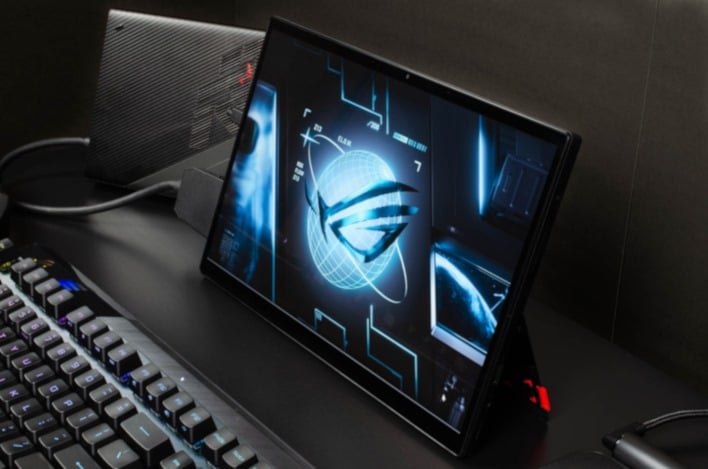Remember the ASUS ROG Flow Z13? We’ve never reviewed one, but we took a peek at them during CES in both 2022 and 2023. If you don’t recall, they’re kind of like the Microsoft Surface Pro, but oriented for gaming rather than productivity. They are from the “Republic of Gamers” brand, after all. The extant ROG Flow Z13 tablets have been based on Intel CPUs paired with entry-level GeForce GPUs, but it looks like that’s about to change next gen.
We say that because a self-described “thermal specialist & renewable thermal designer” by the name of Sam Jiun-Wei Hu has seemingly shared what appears to be an internal ASUS presentation on his personal blog. The site goes into considerable detail describing the ROG Flow Z13 2025 and its cooling apparatus, which is apparently intended to accommodate an AMD Strix Halo SoC with total TDP up to 110 watts.

The primary purpose of the presentation seems to be to catalog the development of the cooling solution for the upcoming iteration of the ROG Flow Z13. The page’s “conclusions” detail improvements over the course of refining the design, claiming that the optimizations made by Hu and team decreased the surface temperature of the device to below 50°C, improved acoustic performance, and reduced both weight and cost of the vapor chamber by 15-20%.
Of course, all of that matters much more to ASUS than it does to consumers. The interesting part for consumers is that this is a 13″ tablet that will include an AMD Strix Halo processor. To remind you, that’s the long-rumored high-end APU that AMD is expected to release early next year. It’s a unique design, more similar to a Mac M-series processor or a game console chip than something you’d normally see in a PC.

If you’re thinking “Strix? Isn’t that the Ryzen AI 300 CPUs?” then you’re confusing Strix Halo for Strix Point, which are indeed the chips in new laptops like the ASUS Zenbook S 16 we just reviewed. Strix Halo, on the other hand, is the chip diagrammed above. On the top end, it sports up to sixteen Zen 5 CPU cores and up to 20 RDNA 3.5-architecture Workgroup Processors, or WGPs. That’s even more than the PlayStation 5’s sixteen WGPs, and those are much closer to the older RDNA 2 design than the brand-new RDNA 3.5 architecture.
However, the performance of Strix Halo, particularly in a power-constrained environment like the ROG Flow Z13 tablet, probably isn’t going to actually match that of the PlayStation 5, nevermind that ASUS probably isn’t using the top-end configuration of AMD’s super APU. That’s because, even though Strix Halo is said to employ a double-wide 256-bit memory bus—a detail supported by the eight-package DRAM configuration in the diagrams—it’s still using LPDDR5X memory, which has a relatively low transfer rate compared to the GDDR6 RAM used in the PS5.

